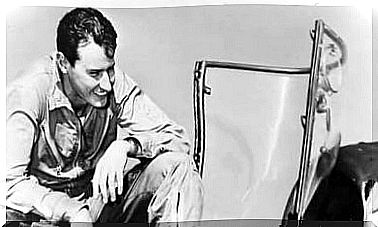Guide To Do A Functional Analysis

In psychology we find multiple techniques and methodologies to work on the behaviors and emotions of patients. One of them is the functional analysis of behavior, a tool that allows us to identify the antecedents and consequences of a certain behavior, in order to understand in which contexts it appears, with what function, for what purpose, etc. However, it goes further: it is also focused on determining what factors maintain this behavior, what factors were relevant in its acquisition, etc.
Thus, it is a tool of psychology (more specifically, psychotherapy), through which we seek to understand why a behavior appears, remains and disappears. Its objective is to offer a functional vision of this behavior and help the patient to change, reduce or eliminate it. But how do you perform a good functional analysis? We leave you a brief guide with 9 steps to do it.

What is functional analysis and what is it for?
As we said, functional analysis allows us to analyze why certain behaviors increase or decrease at certain times, areas, contexts … In this way, it is a work methodology (typical of behavioral orientation) that aims to answer the question: ¿ What is it that makes a person behave in X ways?
According to García and Vallejo (1993), in the context of functional analysis (or more specifically, behavioral analysis) the environment is considered in terms of stimuli; in it, the responses (or behaviors) can be cognitive, motor or physiological. Thus, through functional analysis, we understand behavior as “responses”, which implies a temporal relationship with the stimulus conditions that precede them.
Guide to doing a functional analysis
How to carry out a functional analysis of behavior? We offer you a brief guide with the steps to follow to carry out this task, so interesting and useful in the psychotherapeutic field. To do this, we will resort to the 9 steps proposed by García and Vallejo (1993):
1. Definition of the problem behavior or behaviors
The first step to carry out a good functional analysis will be to identify and define the problem behavior or behaviors. By problem behavior we understand that which we want to analyze, study, reduce, increase … That is, the one on which we will focus (or the one that generates discomfort, the one that we want to change), which is usually part of the reason for the demand / consultation of the patient.
2. Analysis of the responses
It is about analyzing the responses of the subject ; that is to say, those that we are studying. As we have mentioned previously, the behaviors here acquire the nomenclature of “responses”.
3. Analysis of antecedent stimuli
In this step, we will look at what precedes the behavior. That is, what stimuli are present at the moment of the behavior. For example, if the problem behavior is that a child screams and becomes angry, the antecedent may be that his father has set a limit for him.
4. Analysis of consequent stimuli
Consequences will also need to be analyzed. With consequents we understand the consequences of the behavior; that is, what happens after the appearance of the problem behavior (both positive and negative or neutral). Continuing with the previous example, the consequence could be that the parent withdraws attention from the child.
5. Self-control strategies
Once the “thick” part of the functional analysis process has been carried out (identifying the behavior, its antecedents and its consequences), there are still some steps left. At this point, we will analyze what self-control strategies the patient has to deal with his problem behavior.
6. Subject’s resources
In line with the previous point, we will also study what resources the subject has to deal with their problem behaviors. By resources we understand all those strategies, measures or actions that allow the person to solve a problem or deal effectively with a certain situation. We will also have to find out if it starts them up when the problem behavior appears.
7. Factors for maintaining the behavior or problem behaviors
The factors for maintaining the problem behavior are those that make it not extinguished. Continuing with the aforementioned example of the child who screams when angry, a sustaining factor could be that the mother, when the father withdraws attention from him, hugs him to calm him down.

8. Relevant factors in the acquisition of the problem
To perform a good functional analysis of behavior, it will also be important to detect which factors are relevant in the acquisition of the problem. That is, what could have caused this behavior? Why has it appeared? What stimuli are related to its appearance and acquisition? It is about going back to the origin, to the cause, to better understand this behavior.
9. Treatment program to follow
Finally, the last step of the functional analysis is to design a personalized treatment program for each patient and behavior. To do this, we must be clear about what intervention objectives we want to work with the person, that is, what we want to achieve, in what period of time and in what way.
We have offered a possible guide to doing a functional analysis of behavior; however, in other sources you can find guides that vary slightly in some of their steps. Of course, the most important part of this process is to write down all the relevant information of the case, use detailed registration procedures, observe, etc., to clearly identify what precedes the problem behavior and what consequences it has for it to be maintained.
All human behaviors have a why (and a why), always; Getting to know these elements allows us to get a little closer to the human mind and behavior, and therefore, as therapists, to help the person in front of us.









